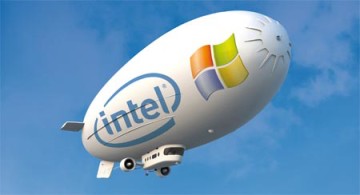 Intel CEO Pat [kicking] Gelsinger has warned that the company’s pants performance is likely to get worse before it gets better.
Intel CEO Pat [kicking] Gelsinger has warned that the company’s pants performance is likely to get worse before it gets better.
Talking to the gathered throngs at the Evercore ISI TMT conference, Gelsinger warned Intel will continue to lose share in the server processor market next year, with recovery starting in 2025.
After selling off its Optane memory business earlier this year, Intel is also likely to take further steps to streamline the bloated product portfolio of its dross.
Gelsinger’s return in early 2021 appeared to breathe new life into the firm, but he appears to be dealing with shedloads of more woe.
The next generation of server processors, codenamed Sapphire Rapids, has been more delayed than a London to Brighton train, and there is not even a replacement bus service. They were supposed to tip up in 2021, the new Xeon chips were first pushed back to early 2022, then to the middle and end of the year – and now it appears most will have to wait until Q1 2023 .
Intel’s foray into the GPU business — the Arc suffered repeated delays connected to the global chip shortage and other Covid-related factors. Word on the street is the outfit can’t get its Arc GPUs up to speed with current-gen models from Nvidia and AMD. Some think Intel might have to scrap its Arc Alchemist and Battlemage lines completely, although Chipzilla has denied this.
In July, Intel published a dismal quarterly earnings report, the lowlight of which was a 22 percent drop in revenue year-on-year. So bad was the performance, Gelsinger took to Twitter to issue a public apology.
“This quarter’s results were below the standards we have set for the company and our shareholders. We must and will do better”, he wrote.
Traditionally a stronghold for Intel, the data center market is of immense strategic importance; a recovery of momentum here would go a long way to setting the company back on the right track.
Gelsinger suggested that, although the company’s products will continue to be competitive, Intel won’t recover true leadership status until the arrival of its Sierra Forest processors in 2024.
The new line will benefit from a high level of power-efficiency and greater core count, which Intel hopes will help to fend off the advance of ARM-based chips (like AWS’ Graviton series), as well as processors from its x86 competitors.





